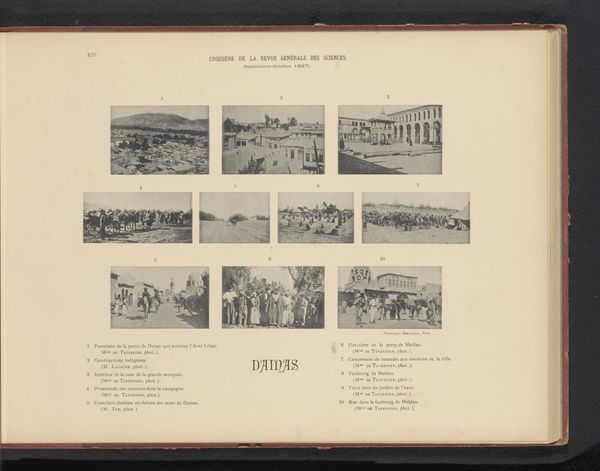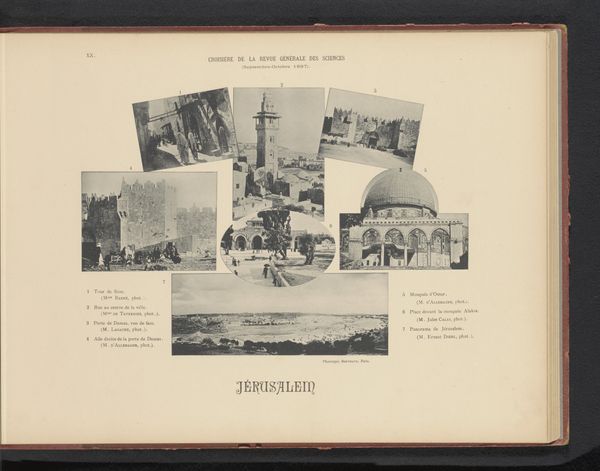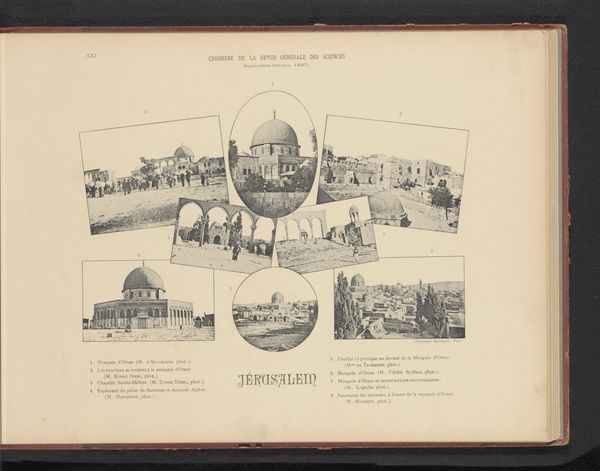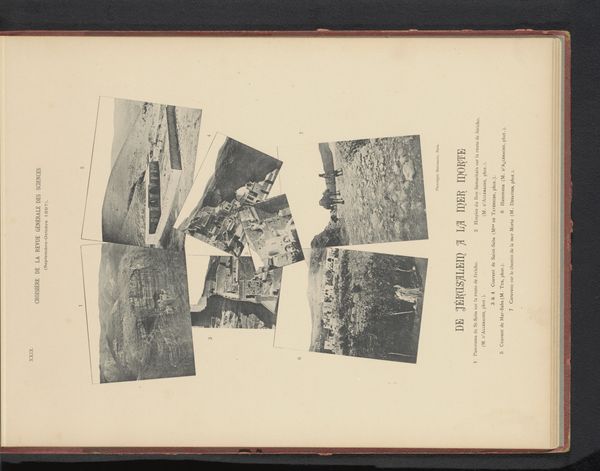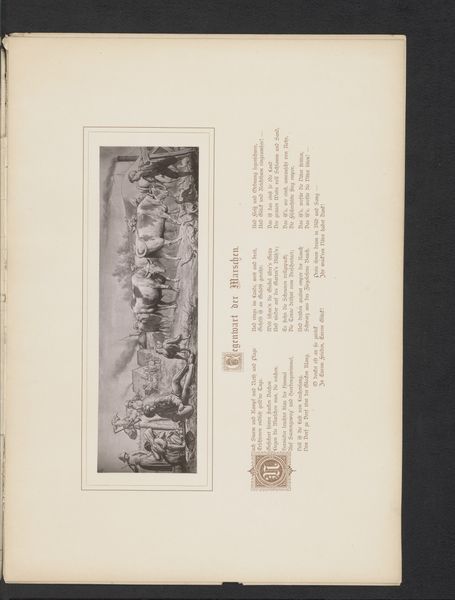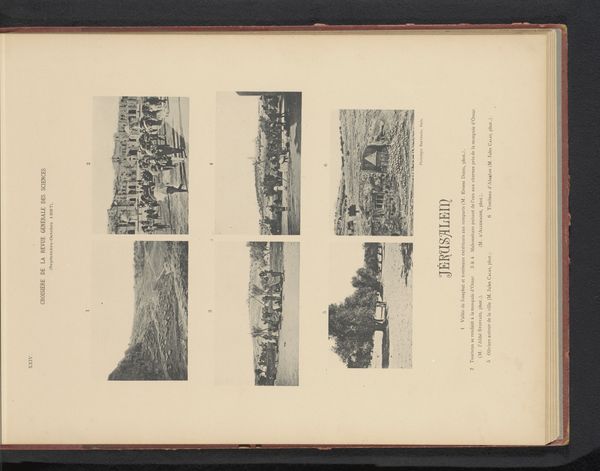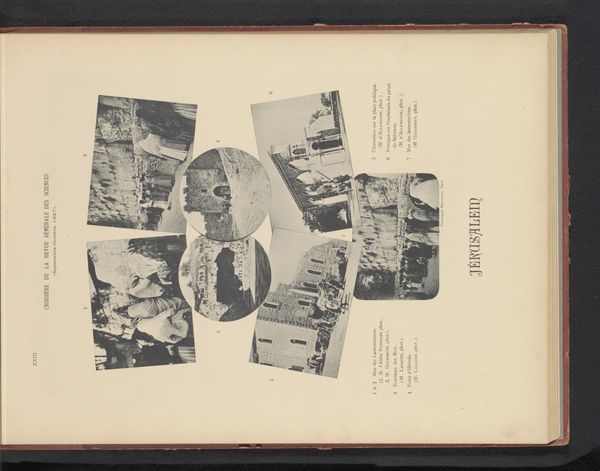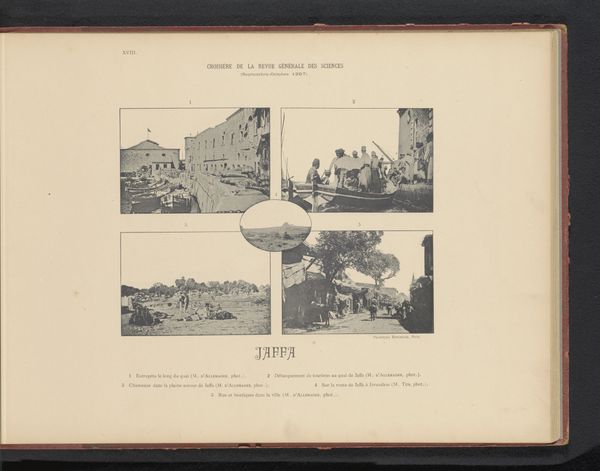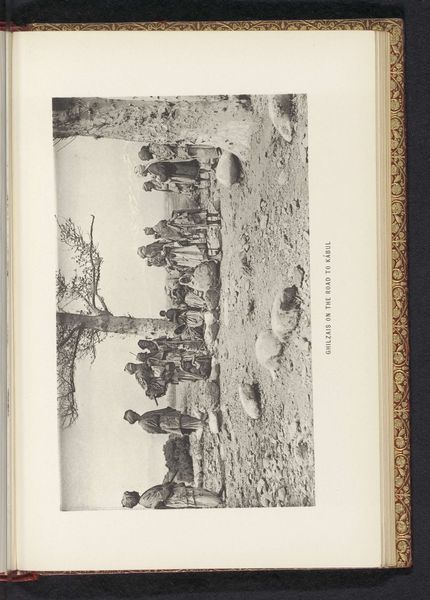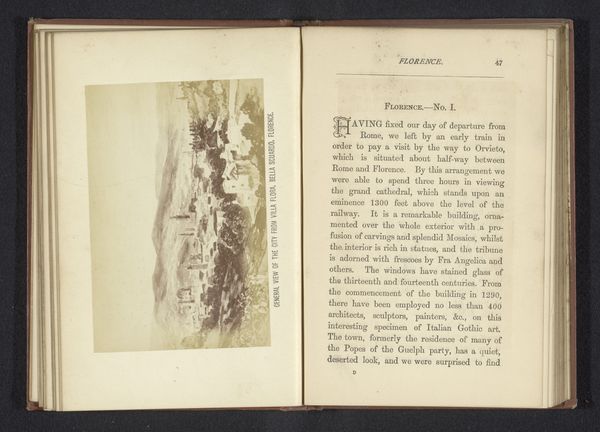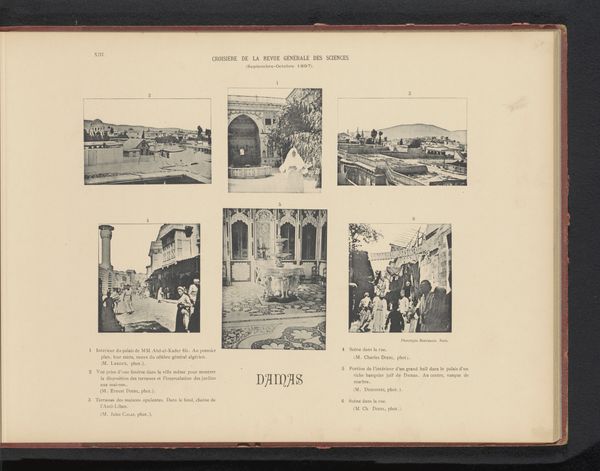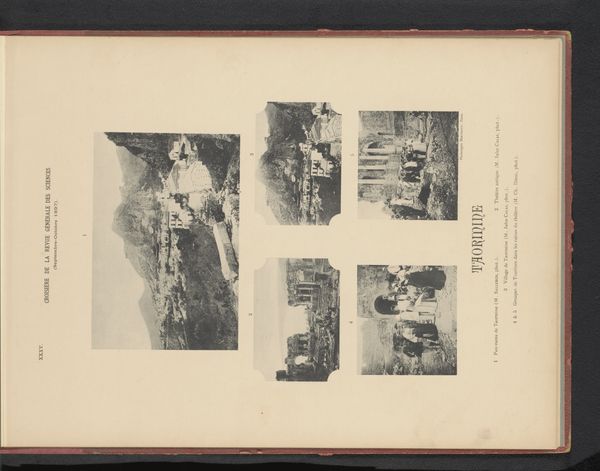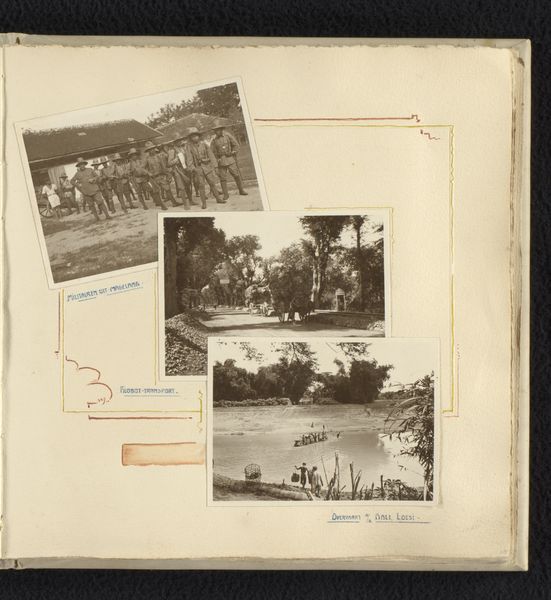
print, photography
# print
#
photography
#
coloured pencil
#
orientalism
#
cityscape
Dimensions: height 293 mm, width 355 mm
Copyright: Rijks Museum: Open Domain
Editor: This piece is titled "Zeven gezichten op Bethlehem en Bethanië, Israël," which translates to "Seven Views of Bethlehem and Bethany, Israel". It was created before 1898 by various artists, and it uses both print and photography. Looking at the monochromatic photos laid out on the page, I immediately notice the composition seems carefully curated to present these locations as historical landmarks. What jumps out at you? Curator: The compilation aspect of the image, its almost scrapbook-like quality, really underscores its function as a tool of representation. Here we have multiple photographers, perspectives, bundled and contained in one place, ostensibly illustrating these 'holy lands'. It speaks volumes about the burgeoning tourism industry and the orientalist gaze during this period. How do you think presenting these multiple perspectives might affect the viewer’s understanding of the depicted locations? Editor: That's interesting. I hadn't considered it in relation to tourism. I suppose, by compiling several images, it presents the area as comprehensively explored, almost 'captured'. Curator: Exactly. Notice how each photographic view is neatly labelled and categorised, lending an air of scientific objectivity. It is crucial to understand the institutional and socio-political forces that shaped both the production and consumption of these kinds of images. These images would have circulated in publications designed for a European audience, thus constructing Bethlehem and Bethany within a specific, Western framework. Who do you think the intended audience for such an image might have been? Editor: Likely European Christians wanting a visual confirmation of Biblical places. So the "truth" of these images isn't just in what they depict but how they are framed by cultural expectations and biases. Curator: Precisely! This work reminds us that viewing historical images requires a critical awareness of the contexts and intentions that informed their creation. Editor: Thanks, I've learned a lot by discussing how images can be tools to create Western frameworks.
Comments
No comments
Be the first to comment and join the conversation on the ultimate creative platform.
